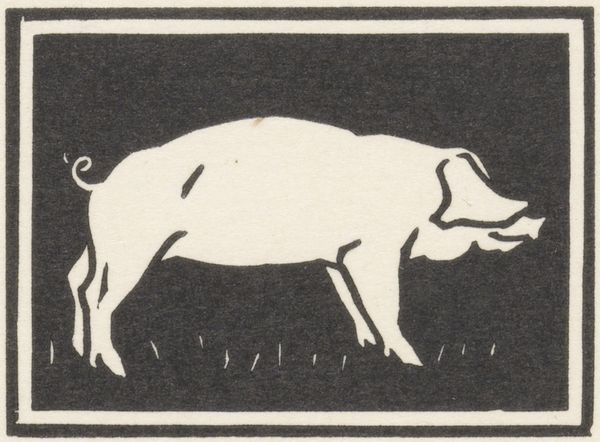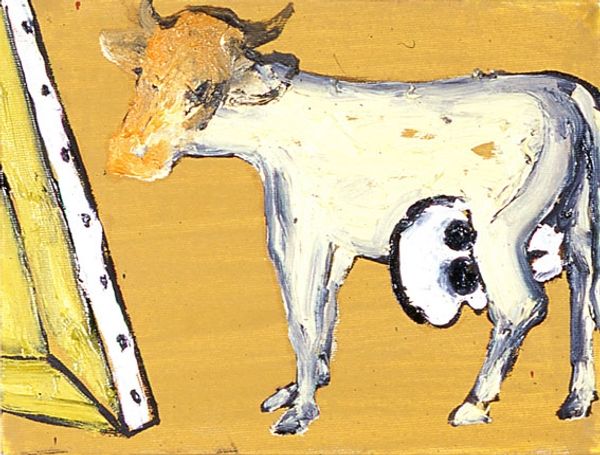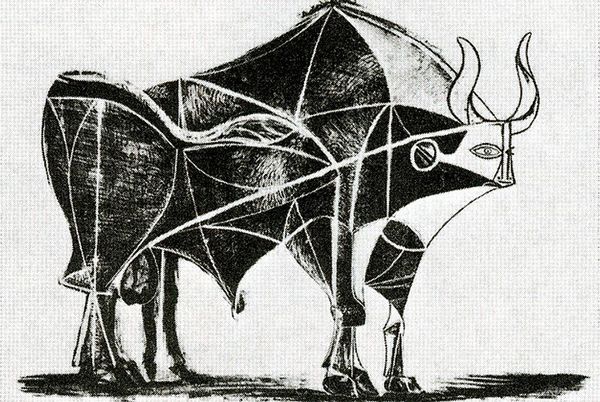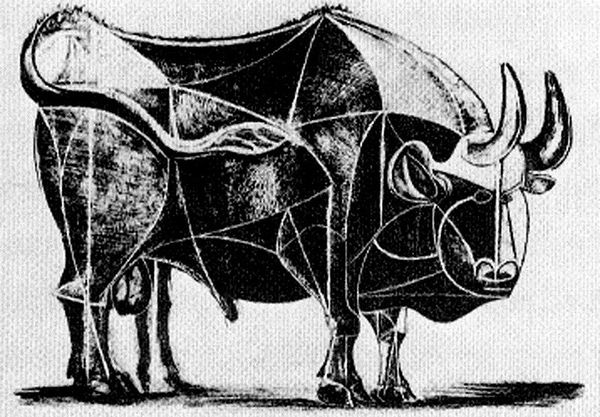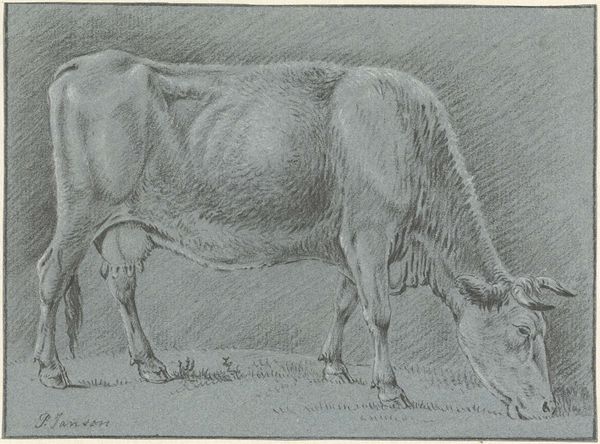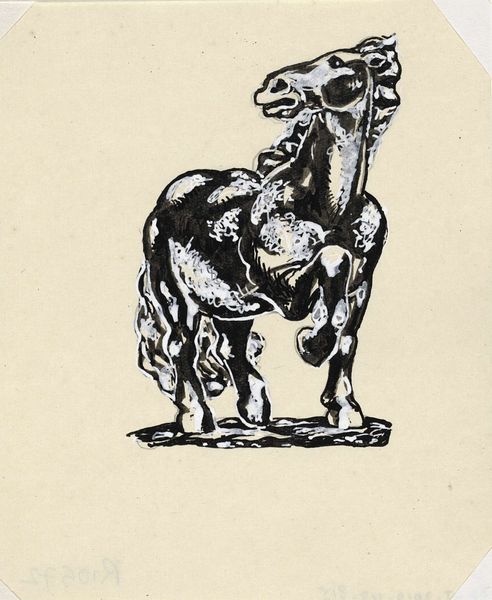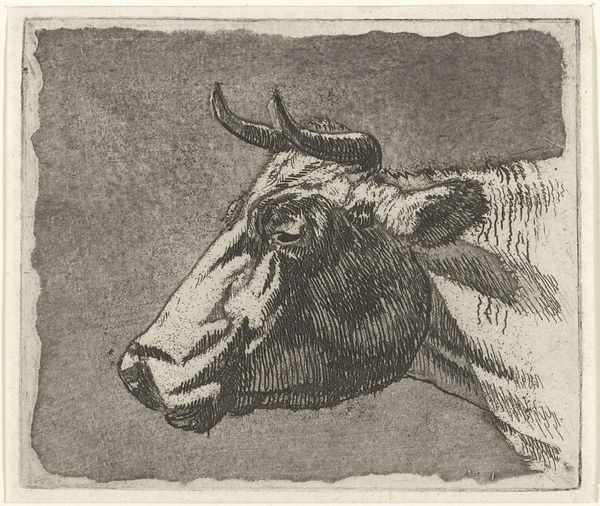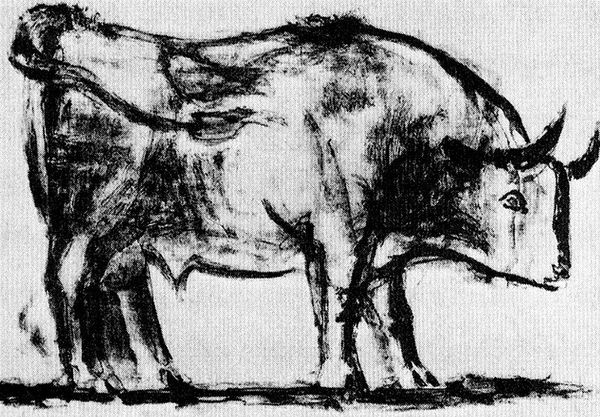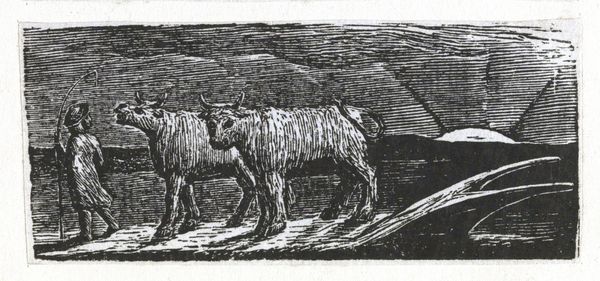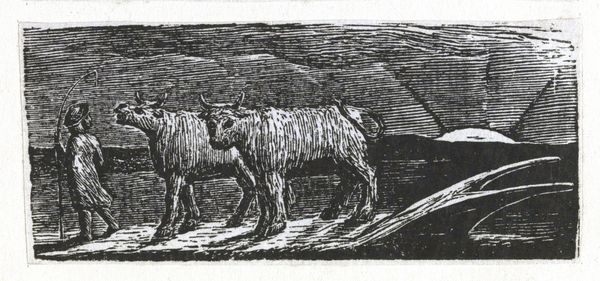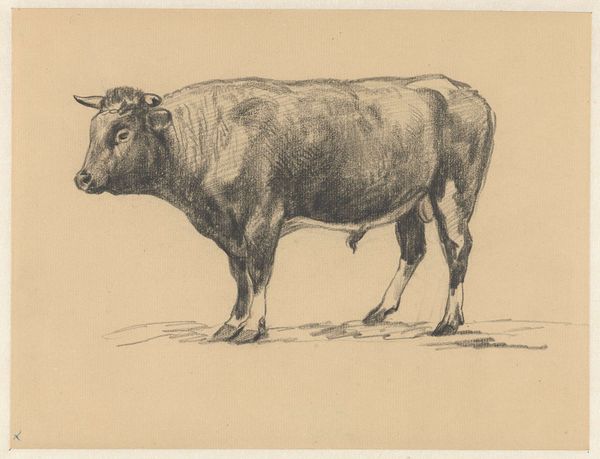
Copyright: Roy Lichtenstein,Fair Use
Curator: Oh, wow. I see something imposing. Strong lines and contrasts—what’s this artwork here? Editor: We're looking at Roy Lichtenstein's "Bull I" from 1973, a print now residing at the Museum of Modern Art in New York. Curator: Lichtenstein playing with the image of a bull. Feels loaded, doesn't it? Almost like a challenge to the macho culture that the animal often embodies. It also appears to be geometric—that seems to go against its traditional imagery, in a way. Editor: You hit on something vital. I feel it in my guts too, it's so intriguing to see him simplifying the bull to these stark, almost clinical shapes. Is it strength or something else? It’s got a sense of deconstruction about it, doesn't it? Stripping away the emotion, leaving just the... outline? Curator: Exactly. Consider the historical context. The 70s saw various movements questioning power structures, and Lichtenstein, through his Pop Art lens, engages with this discourse by reducing a symbol of masculine strength to mere form. This begs us to consider: what is left when the veneer of cultural significance is removed? What remains of masculinity itself? Editor: Oh I love that take. It almost looks like an image being run through processing software... it's cool to see. Makes me question ideas of traditional art and the image. By removing colors and shading and emphasizing shape, maybe he is forcing us to think about representation. And also think about the essence of bull-ness... Does the simplification alter our experience with what it means to see that image? Curator: Yes, representation becomes key. It’s not just about the image of the bull, it’s about what that image *does* and who it represents in a broader socio-political landscape. Think about feminism at the time. Consider the evolving narratives surrounding gender and power. How does this minimalist representation intersect with, or perhaps even subvert, those narratives? Editor: Very strong stuff... really compelling questions that you raise. It also kind of feels like seeing only one perspective too. A sort of 2D image—which feels limiting... like there is more, underneath the monochrome depiction. Food for thought, I really love what it stirs up! Curator: Absolutely, these conversations can be very rich and multilayered. I believe there is plenty to digest for us. Editor: Well put, exactly. Plenty to chew on for today I guess.
Comments
No comments
Be the first to comment and join the conversation on the ultimate creative platform.
